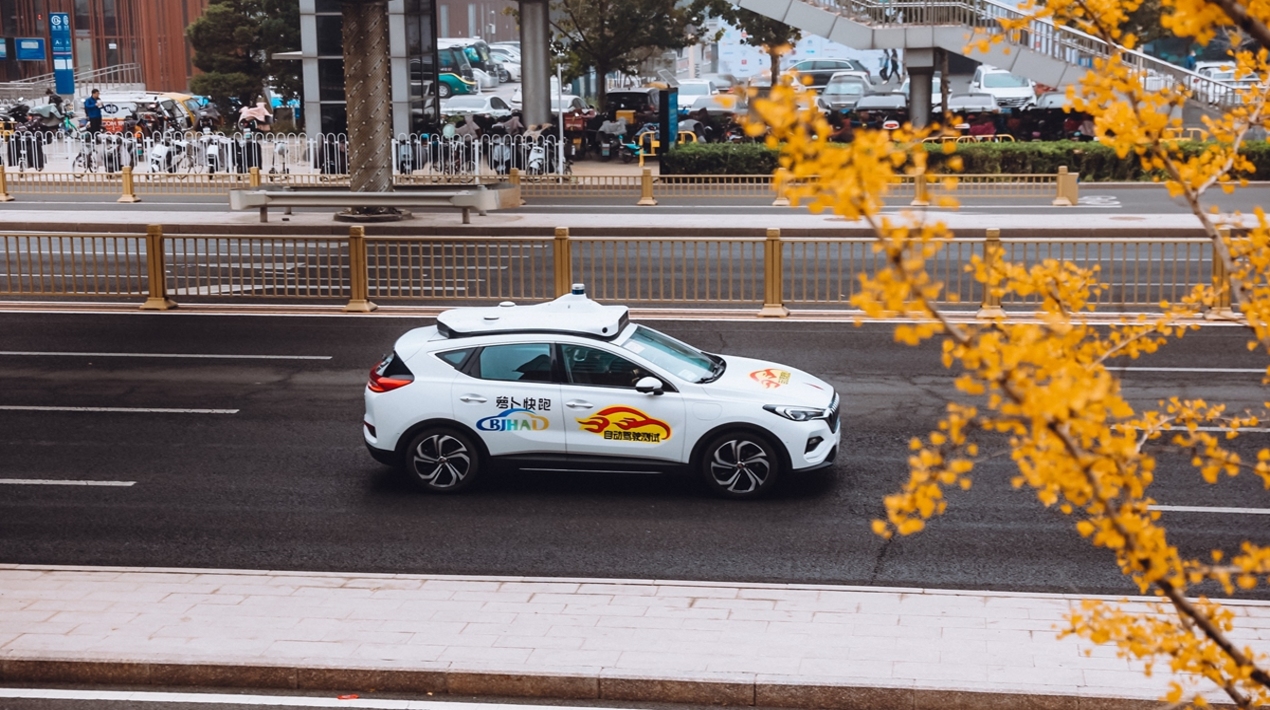
Beijing launched its first commercial trial of autonomous driving and rolled out relevant management policies. The development could be the end of the testing phase for autonomous driving and the beginning of broader market development.
The cumulative mileage of autonomous driving tests has reached nearly 3 million km since April this year with the management policy innovation achieving good results. The conditions to carry out the commercial trial have been met.
– Kong Lei, Head of the Office
The first group of enterprises that are permitted to undertake a pilot commercial activity will be restricted to a 60 square kilometre area of the Beijing Economic and Technological Development Zone in southern Beijing. These enterprises are also permitted to test market-based pricing mechanisms, although pricing logic, payment methods and other information relevant to passengers must be confirmed in advance, according to the head office of the Beijing high-level automated driving demonstration area.
The high-level autonomous driving demonstration zone will expand the trial areas in due time so as to upgrade the travel service for the public. Covering 350 kilometres of roads, the service is available every day of the week from 7 am to 10 pm. This is the right time for autonomous driving to be tested by the market, to see whether users are willing to pay for the services.
Self-driving tech company plans to have around 200 sites covered by its service, and that passengers can pay for rides. The company had handled 500,000 bookings as of October. Policy, technology and public acceptance remain the key to the rapid adoption of autonomous driving.
The number of autonomous cars in use and the designated operating area would both expand further to meet the needs of local residents, laying a foundation for the wider and more rapid development of commercial autonomous driving in China.
The industry will face challenges, including the costs of research and development, test mileage and commercial operations as well as the problems of technological maturity and the development of standard protocols, which will be the hard bones for the industry.
Zhu Xichan, the head of the institute of automotive safety technology at Tongji University, stated that it will take three to five years in China to reach the next level – Level 3, which is conditional driving automation, a substantial jump from the current Level 2. Smart new-energy vehicles (NEVs) have become more accepted by Chinese consumers amid the country’s push for green mobility over recent years,
More efforts are needed to strengthen the safety management of products combined with driving assistance functions and automated driving functions to ensure the safe operation of smart vehicles. Connected vehicle makers that provide automated driving assistance and other autopilot capabilities should take technical measures such as hands-off detection to ensure that drivers are always performing necessary dynamic driving tasks.
The carmakers also must clearly inform users about their vehicles’ functions, performance limitations, driver responsibilities, human-computer interaction equipment instructions and function activation and exit methods, according to the Ministry of Industry and Information Technology (MIIT) guidelines.
As reported by OpenGov Asia, the Ministry of Transport (MOT) and the Ministry of Science and Technology jointly issued a guideline mapping out key transport technology based on innovation for China through 2035. The guideline emphasises making technological breakthroughs in the transport sector. It sets the goal that self-reliance on key transport technology will be achieved by 2035. Mechanisms will optimise to spur the vitality of innovative entities as much as possible. Legislation in artificial intelligence (AI), autonomous driving, and unmanned aerial vehicles (UAV) will be studied and drawn up.
















